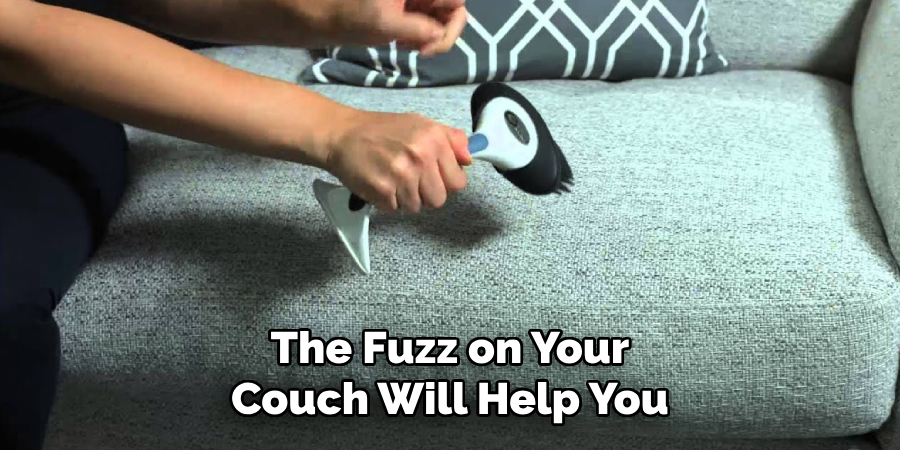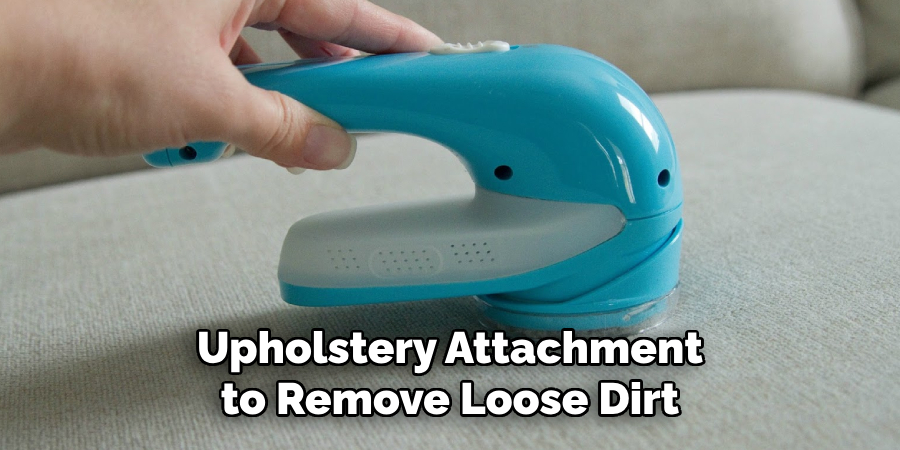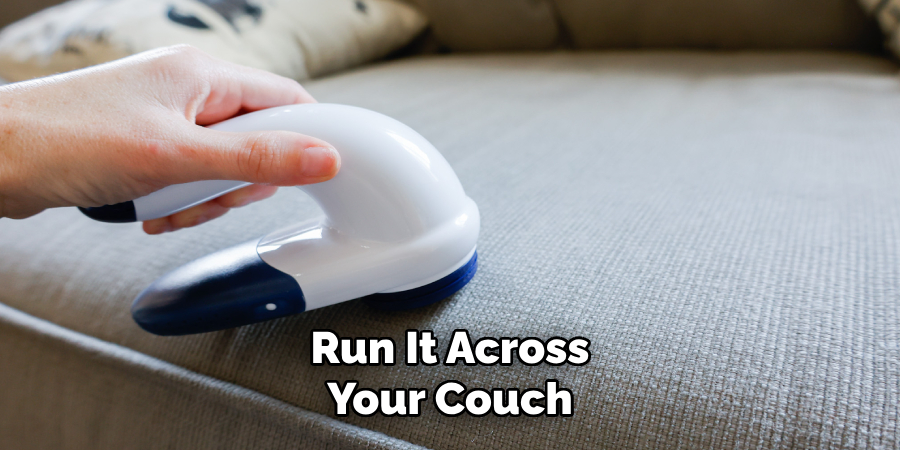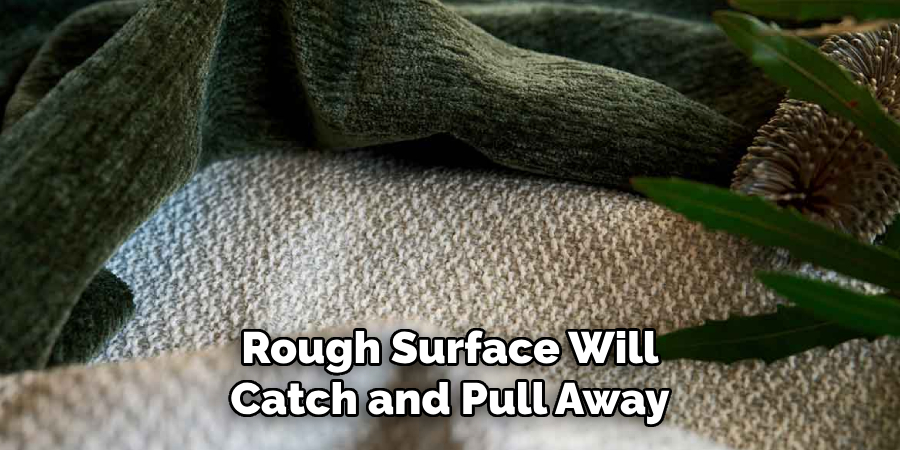Keeping your couch looking fresh and clean can be a challenge, especially when it comes to dealing with unsightly fuzz and lint. Whether it’s from clothing, pet hair, or general wear and tear, fuzz can make your sofa look worn out and neglected. Fortunately, there are several effective methods to remove fuzz from your couch, restoring its original appearance and ensuring it remains a cozy centerpiece in your living space. In this guide, we will explore different techniques how to remove fuzz from couch with ease.

Importance of Maintaining a Clean, Fuzz-Free Couch
Maintaining a clean and fuzz-free couch is crucial for several reasons. Firstly, a well-kept couch enhances the overall aesthetic appeal of your living space, creating an inviting atmosphere for both family and guests. Moreover, regularly removing fuzz and lint helps extend the lifespan of the couch by preventing premature wear and tear. A couch free of debris and pet hair also contributes to a healthier home environment by reducing allergens that can trigger respiratory issues or allergies. By investing a little time and effort into keeping your couch pristine, you not only ensure its comfort and usability but also safeguard your home’s hygiene and style.
Identify the Type of Fuzz
Before you begin removing fuzz from your couch, it’s important to identify the type of fuzz you are dealing with, as this can determine the most effective removal method. Common types of fuzz include lint from clothing, which often sticks to the fabric due to friction; hair from pets, which can become embedded in the fibers; and pilling, which occurs when the fibers of the fabric itself start to clump together. Understanding the source and nature of the fuzz on your couch will help you choose the right tools and products for removal, ensuring the process is both efficient and gentle on your upholstery.

Tools and Materials Needed
To effectively remove fuzz from your couch, you’ll need a few essential tools and materials that suit the type of fuzz identified. Here’s a list of commonly used items:
- Lint Roller or Sticky Tape: Ideal for quickly picking up surface lint and pet hair with minimal effort.
- Fabric Shaver: A handy tool for safely shaving off pilling from fabric couches without damaging the upholstery.
- Vacuum Cleaner with Upholstery Attachment: Useful for removing embedded hair and debris from the couch fibers.
- Bristle Brush or Pet Hair Removal Brush: Effective for loosening and gathering pet hair that may be trapped within the fabric.
- Pumice Stone or Sweater Stone: Can gently scrape off pilling and fuzz from the couch surface, especially on more durable fabrics.
- Microfiber Cloths: Helpful for wiping down and collecting remaining lint after using other tools.
Ensure to keep these items accessible for regular maintenance to keep your couch looking its best.
Preparing the Couch for Fuzz Removal
Before you begin the process of removing fuzz from your couch, it’s crucial to properly prepare the area to ensure an effective and thorough cleaning. Start by clearing the couch of any loose items such as cushions, throws, or decorative pillows. This will allow you to access the entire surface and prevent any obstructions during the cleaning process. Next, check for any stains or spills on the fabric, as these should be addressed prior to fuzz removal to avoid spreading the mess further as you work.
Use a gentle fabric cleaner suitable for your couch’s material to spot clean any necessary areas. Once the couch is cleared and spot-cleaned, vacuum the entire surface using an upholstery attachment. This preliminary step will help remove surface dirt, dust, and loose particles, making the fuzz removal process more efficient. With your couch prepped, you can now proceed with the specific tools and techniques required for each type of fuzz.
Preventing Fuzz from Accumulating
Preventing fuzz from accumulating on your couch involves a combination of regular maintenance and attentive fabric care. Start by vacuuming your couch weekly using an upholstery attachment to remove loose dirt, dust, and potential lint sources. Consider using washable slipcovers to protect the upholstery from direct contact with clothing or pet hair.

Choosing dense, tightly woven fabrics for your couch can also reduce the chances of pilling, as these materials are less prone to fuzz accumulation. Additionally, it’s beneficial to enforce household rules such as discouraging jumping on the couch and designating specific areas for pets to lounge. Regularly inspecting your couch for early signs of pilling or loose fibers allows you to take timely action before the issue becomes more prominent.
With these preventative measures, you can maintain a clean, fuzz-free couch that retains its appeal and charm for years to come.
10 Effective Methods How to Remove Fuzz from Couch
Couches are the centerpiece of any living room, providing comfort and style. However, for pet owners and DIY enthusiasts, fuzz and lint can quickly turn a pristine couch into a furry mess. Whether it’s from pets shedding or clothes leaving lint behind, removing fuzz can be a frequent challenge. In this listicle, we’ll explore ten effective methods to help you keep your couch looking fresh and clean.
1. Use a Lint Roller
Efficient and Convenient
A lint roller is a handy tool that every pet owner should have. It effortlessly picks up pet hair and fuzz, leaving your couch spotless in minutes. Simply roll it over the affected areas, and watch as it collects unwanted debris. For optimal results, replace the sticky sheets as they fill up to maintain their effectiveness.
2. Try a Rubber Glove
Surprisingly Effective
If you’re out of lint rollers, don’t worry—a simple rubber glove can do the trick. Dampen the glove slightly, then run it across your couch. The friction and moisture will help gather pet hair and fuzz, making it easy to pick up and dispose of. This method is cost-effective and an excellent last-minute solution.

3. Invest in a Fabric Shaver
Professional Results
Fabric shavers are designed to remove pills and fuzz from upholstery with ease. They work by gently shaving off surface fuzz without damaging the fabric. While they are an investment, fabric shavers are worth it for maintaining a clean and polished look on your furniture.
4. Utilize a Vacuum Cleaner with Brush Attachment
Deep Cleaning Power
Most vacuum cleaners come with a brush attachment specifically designed for upholstery. Use this tool to efficiently remove hair and fuzz lodged deep within the fabric. For best results, vacuum in multiple directions to ensure you collect every last bit of debris.
5. Apply Baking Soda
Natural Cleaning Agent
Sprinkling baking soda over your couch before vacuuming can help loosen stubborn fuzz and odors. Allow it to sit for 15–20 minutes before vacuuming it up, and you’ll notice your couch not only looks cleaner but smells fresher too. This method is perfect for fabric-specific maintenance.
6. Use White Vinegar
Versatile Household Cleaner
Mix equal parts of white vinegar and water in a spray bottle, and lightly mist your couch. Use a microfiber cloth to gently rub the solution into the fabric. White vinegar acts as a natural fabric softener, helping to loosen fuzz for easy removal.

7. Try a Pumice Stone
Unexpected Utility
Pumice stones aren’t just for pedicures. They can also remove fuzz from fabric. Gently rub the stone over the affected area—its rough surface will catch and pull away fuzz. Be cautious with delicate fabrics, though, as the stone can be abrasive.
8. Use a Razor Blade
For Small Areas
A razor blade is an old-school solution that works well on small, concentrated patches of fuzz. Hold the blade at a slight angle and carefully scrape it over the fabric. This method requires precision, so it’s best for smaller jobs on durable materials.
9. Dryer Sheets for Static Removal
Quick and Easy
Running a dryer sheet over your couch can help lift fuzz thanks to its anti-static properties. It works well on light fuzz or lint and leaves a fresh scent behind. This is a great option for quick touch-ups between thorough cleanings.
10. Brush with a Pet Hair Remover Tool
Perfect for Pet Owners
Invest in a pet hair remover brush, specifically designed to tackle pet hair on upholstery. These tools often have rubber bristles that effectively pick up fuzz and hair without damaging the fabric.
Conclusion
Combating fuzz and lint accumulation on your couch doesn’t have to be a daunting task. By utilizing these ten effective methods, you can ensure your furniture remains pristine and inviting. Whether it’s through using a lint roller for quick cleanups or employing a fabric shaver for professional-level maintenance, each technique offers unique advantages to fit various needs and preferences.
Regular maintenance, along with the preventative measures discussed earlier, will extend the life of your couch while keeping it aesthetically pleasing and comfortable for years to come. Thanks for reading, and we hope this has given you some inspiration on how to remove fuzz from couch!
